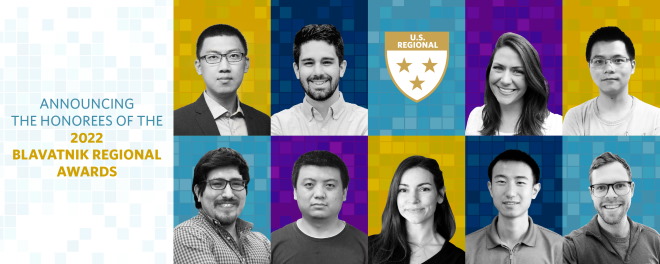
The winning postdoctoral researchers include a molecular biologist, an organic chemist, and a condensed matter physicist
NEW YORK – September 21, 2022 – The Blavatnik Family Foundation and the New York Academy of Sciences today announced the three Winners and six Finalists of the 2022 Blavatnik Regional Awards for Young Scientists. The Awards honor outstanding postdoctoral scientists from academic research institutions across New York, New Jersey, and Connecticut. The announcement comes during the National Postdoctoral Association’s 13th annual celebration of 2022 National Postdoc Appreciation Week, which recognizes the significant contributions that postdoctoral scholars make to U.S. research and discovery.
The Blavatnik Regional Awards jury, consisting of distinguished scientists and engineers from across the New York region, selected one Winner in each of the three categories who will receive a $30,000 unrestricted prize and two Finalists in each category who will be awarded $10,000 each. In the 2022 competition, there were 158 outstanding nominations from 26 academic institutions in the New York metropolitan region (Tri-State area). The 2022 Blavatnik Regional Awards Winners and Finalists will be honored at the 2022 New York Academy of Sciences Gala at Cipriani 25 Broadway on November 14, 2022. Due to pandemic delays, the 2021 Blavatnik Regional Awards honorees will also be celebrated at that event.
“It is my great pleasure to congratulate this year’s Blavatnik Regional Awards Winners and Finalists,” said Len Blavatnik, Founder and Chairman of Access Industries, head of the Blavatnik Family Foundation, and member of the President’s Council of the New York Academy of Sciences. “The Tri-State area is one of the most exciting scientific ecosystems, attracting outstanding postdoctoral talent from around the world. We look forward to great discoveries from these exceptional young scientists in the future.”
Nicholas B. Dirks, the New York Academy of Sciences’ President and CEO, said, “Postdocs are the quiet force driving scientific research. Without their tireless efforts and enormous sacrifice, most of our new discoveries and inventions in science, medicine, and engineering would not happen. We are proud to salute the 2022 Blavatnik Regional Awards Winners and Finalists as part of our Academy’s tribute to National Postdoc Appreciation Week.”
The 2022 Blavatnik Regional Awards Winners in the three award categories are:
Life Sciences

Josefina del Mármol, PhD, nominated by The Rockefeller University
Molecular biologist Dr. Josefina del Mármol has provided the first structural snapshot of odor detection by an olfactory receptor (OR) from any species at the near-atomic level. At the molecular level, odors are composed of combinations of millions of chemically diverse compounds that animals must sense with only tens or hundreds of ORs. Through the use of cryo-electron microscopy, molecular biologist del Mármol determined the atomic structure of an insect OR and how multiple odorants, including the insect repellent DEET, interact with it in a structural and biochemical fashion. Del Mármol’s discoveries provided the first conclusive evidence that DEET targets insect ORs and supports the hypothesis that DEET “scrambles” the olfactory signal to “confuse” mosquitos. Del Mármol has recently joined the faculty at Harvard Medical School.
Physical Sciences & Engineering
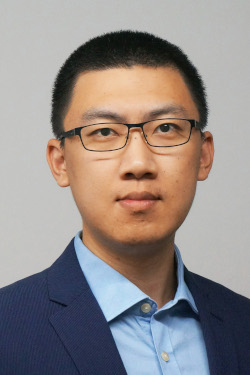
Xiaolong Liu, PhD, nominated by Cornell University
Condensed Matter physicist Dr. Xiaolong Liu has developed new types of microscopic imaging techniques, like the high-speed scanning Josephson-tunneling microscopy technique (SJTM), that explore vexing problems in quantum physics. The new microscope Liu developed led to the very first atomic-scale observation of Cooper-pair density waves—standing waves of electron pairs in a superconductor, similar to the standing wave of a plucked string. Liu engages in another exciting area of physics—electron superfluids—an electronic version of a fluid, much like water, that contains no resistance to flow. Using SJTM, Liu showed that jet-speeds of up to 3,000 meters per second (up to MACH 9) can be reached by electron pairs in a superfluid. The new imaging methodologies being developed by Liu are equipping scientists with novel tools to explore exciting new problems in quantum physics. Liu has recently joined the faculty at the University of Notre Dame.
Chemistry
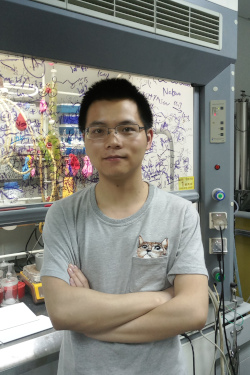
Wen Zhang, PhD, nominated by Cornell University
Organic chemist Dr. Wen Zhang has harnessed electrochemistry to promote reactions of carbon-based compounds without relying on rare materials historically used in chemistry. Chemists use these transition metals—such as palladium or nickel—to manipulate the bonds between carbon atoms in organic molecules. Zhang is advancing the burgeoning field of electrochemical synthesis, which uses electricity to promote reactions instead of transition metals, by demonstrating the ability to manipulate carbon bonds in ways that are required to synthesize drugs and other medicinally relevant compounds. Zhang’s work is sparking a wave of new methods for synthesizing chemicals, and may prove critical in making chemistry more sustainable in the future.
The following postdoctoral researchers have been named Finalists in their respective categories:
Life Sciences

Andrew Bridges, PhD, nominated by Princeton University
Bacteria commonly resist threats by forming multicellular structures known as biofilms. Biofilms are surface-attached, multicellular communities of bacteria that offer protection from antimicrobials and assist in the transmission of bacterial diseases. Microbiologist Dr. Andrew Bridges has pioneered studies on the lifecycles of bacterial biofilms, developing a novel microscopy assay whereby he can visualize, in real-time, the biofilm lifecycle of Vibrio cholerae, the bacteria that causes the global disease, cholera. He focuses on the understudied dispersal phase of the biofilm lifecycle whereby cells exit the biofilm to start another one. By incorporating molecular and genetic techniques, Bridges identified three important steps that drive V. cholerae biofilm dispersal. These steps include signal transduction via a previously uncharacterized molecular signaling pathway, digestion of the components that hold cells together in the biofilms, and finally, bacterial locomotion. Bridges’ discoveries could lead to new strategies to control biofilm dispersal with the potential to halt the spread of disease. Bridges has recently joined the faculty at Carnegie Mellon University.

Daniel Zegarra-Ruiz, PhD, nominated by Memorial Sloan Kettering Cancer Center
The gut microbiome consists of trillions of microbes that impact host immune processes involved in health and disease. Immunologist Dr. Daniel Zegarra-Ruiz found that during early development, gut bacteria act as a template to educate and increase the number microbiota-specific T cells. These important immune cells recognize gut bacteria and help mount appropriate immune responses to future infection. Zegarra-Ruiz also discovered how changes in the gut microbiome can impact colorectal cancer whereby exposing mice to the bacteria Escherichia coli after tumor initiation can amplify tumor growth, but exposure before tumor formation can lead to improved outcomes. Zegarra-Ruiz’s research is critical to understand the impact of bacteria on the immune system and the consequences it has on cancer growth and autoimmune diseases.
Physical Sciences & Engineering
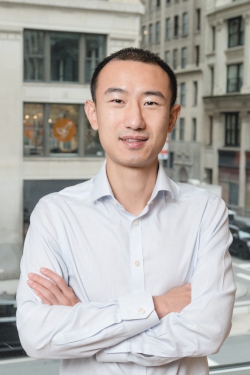
Jiaoyang Huang, PhD, nominated by New York University
Mathematician Dr. Jiaoyang Huang has tackled the most fundamental questions that lie at the heart of Random Matrix Theory (RMT)—a mathematical theory that has widespread use in modern fields of engineering and science. His remarkable results and influence across the field of mathematics will have impacts well beyond the field, including quantum chaos and communication and social networks. Huang has also made fundamental breakthroughs in machine learning. He developed a neural tangent hierarchy framework that makes it possible to study the training dynamics of deep neural networks with characteristics that are reflective of real-world, scalable systems. Huang has recently started a faculty position at the University of Pennsylvania.

James Daniel Brandenburg, PhD, nominated by Brookhaven National Laboratory
Particle physicist Dr. James Daniel Brandenburg has made extraordinary experimental achievements at the frontier of high-energy nuclear physics that are changing our understanding of the properties of light and matter. At Brookhaven National Laboratory, Brandenburg uses the Relativistic Heavy-Ion Collider (RHIC) to investigate the properties of subatomic particles, like quarks and gluons, which are the essential building blocks of visible matter (i.e., protons and neutrons). His work led to the very first experimental observation of the famous Breit-Wheeler process—the simplest physical process by which photons of light are converted into matter. Brandenburg is also credited with a number of other notable discoveries in experimental high-energy physics.
Chemistry

Rosemary Cater, PhD, nominated by Columbia University
Structural biologist Dr. Rosemary Cater has uncovered how omega-3 fatty acids cross the blood-brain barrier (BBB) and is creating new possibilities for delivering neurotherapeutics into the brain. The BBB is a highly selective layer of cells that protects the nervous system from damage but also blocks the vast majority of potential neurotherapeutic drugs from accessing the brain. Cater is the first to identify the molecular structure of a key protein that transports omega-3 fatty acids across the BBB, and in so doing, provides a template to design drugs that mimic those biomolecules to access the brain. She has also demonstrated how other proteins in the brain can serve multiple roles at once to control neurotransmission. Her work opens a host of new possibilities for drugs and treatments targeting neurological disorders.
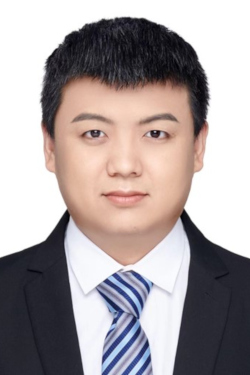
Shuai Gao, PhD, nominated by Princeton University
Structural biologist Dr. Shuai Gao has shed new light on how ions are transported in the body, understanding in new detail how cells behave, and opening new directions for drug development. The channels that shuttle ions into and out of cells are key to a wide range of bodily functions, from facilitating neurological responses like pain to regulating cell behavior. Gao is harnessing innovative strategies to measure the atomic structure of several ion channels that are key to sensing pain. By revealing the molecular basis for how pain relief agents work, Gao is offering new strategies for developing drugs that provide non-addictive pain relief. He has recently joined the faculty at Wuhan University in China.
About the Blavatnik Awards for Young Scientists
The Blavatnik Awards for Young Scientists, established by the Blavatnik Family Foundation in 2007 and independently administered by the New York Academy of Sciences, initially identified outstanding regional scientific talent among faculty and postdoctoral students in New York, New Jersey, and Connecticut. The Blavatnik National Awards, honoring faculty-rank scientists throughout the United States, were first awarded in 2014 and were expanded in 2017 to honor faculty-rank scientists in the United Kingdom and Israel. By the end of 2022, the Blavatnik Awards will have awarded prizes totaling $13.6 million and, to date, has honored over 392 scientists. Visit blavatnikawards.org for further information.
About the Blavatnik Family Foundation
The Blavatnik Family Foundation is an active supporter of world-renowned educational, scientific, cultural, and charitable institutions in the United States, the United Kingdom, Israel, and other countries. The foundation is headed by Len Blavatnik, a businessman, philanthropist, and founder and chairman of Access Industries, a privately held industrial group based in the U.S. with global strategic interests.
Visit www.accessindustries.com or www.blavatnikfoundation.org for more information.
About the New York Academy of Sciences
The New York Academy of Sciences is an independent, not-for-profit organization that has been committed to advancing science for the benefit of society since 1817. With more than 20,000 members in 100 countries, the Academy advances scientific and technical knowledge, addresses global challenges with science-based solutions, and sponsors a wide variety of educational initiatives at all levels for STEM and STEM-related fields. The Academy hosts programs and publishes content in the life and physical sciences, the social sciences, nutrition, artificial intelligence, computer science, and sustainability. The Academy also provides professional and educational resources for researchers across all phases of their careers. Please visit us online at www.nyas.org.
Media contact
Kamala Murthy, kmurthy@nyas.org, 212-298-3740